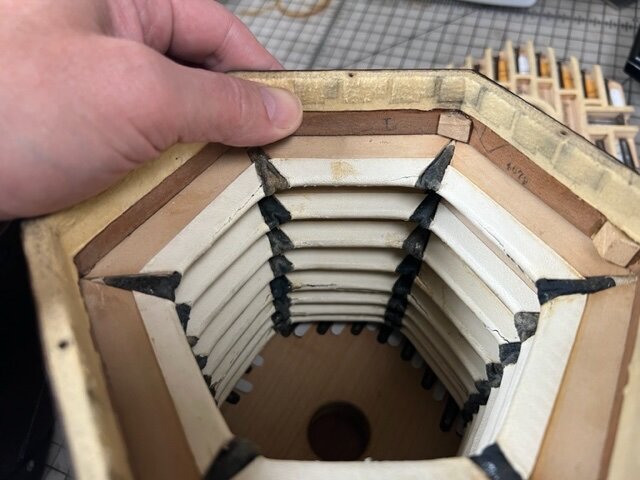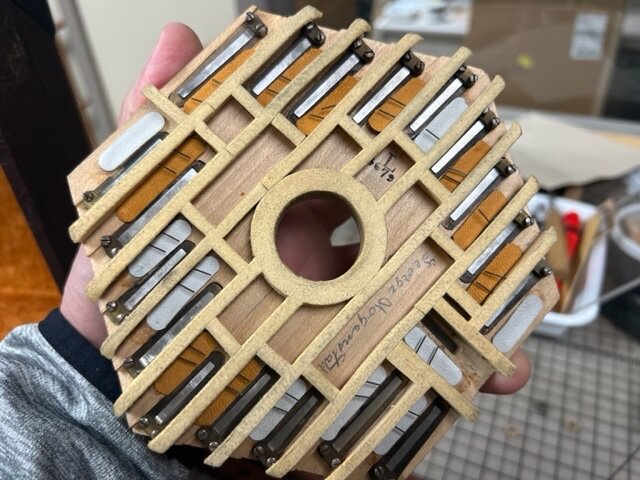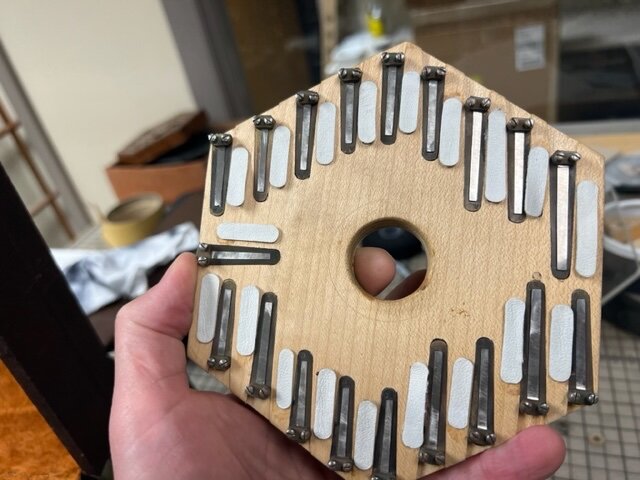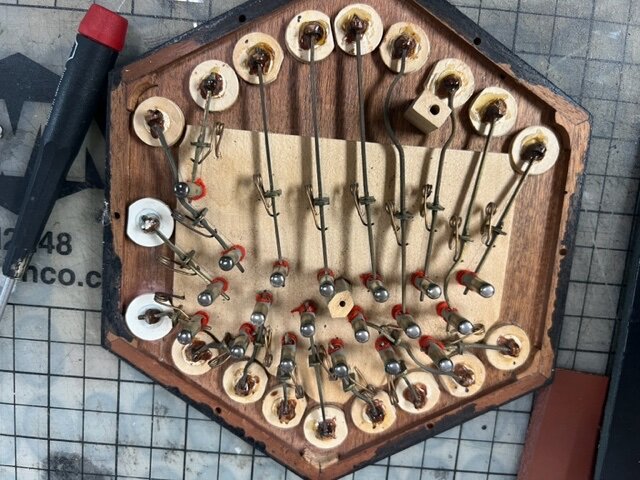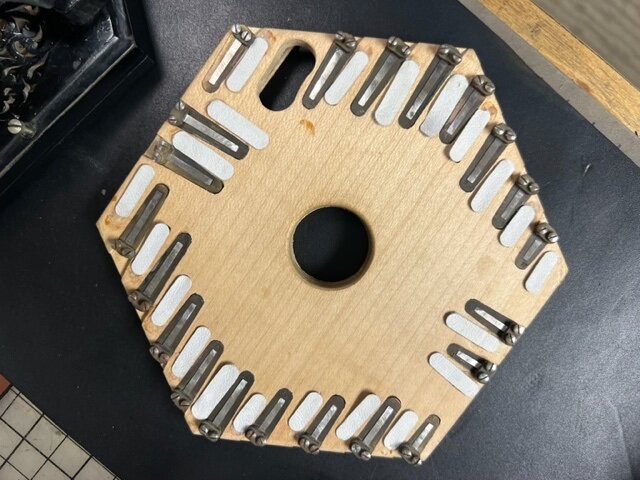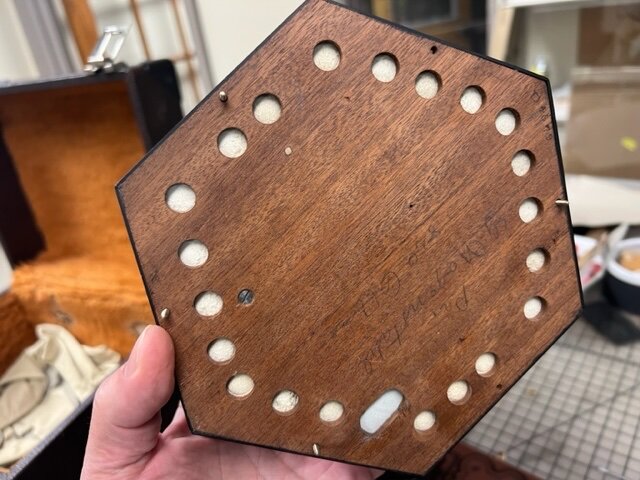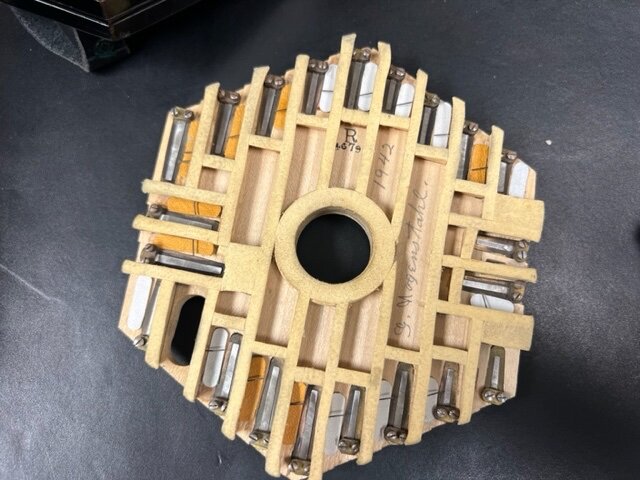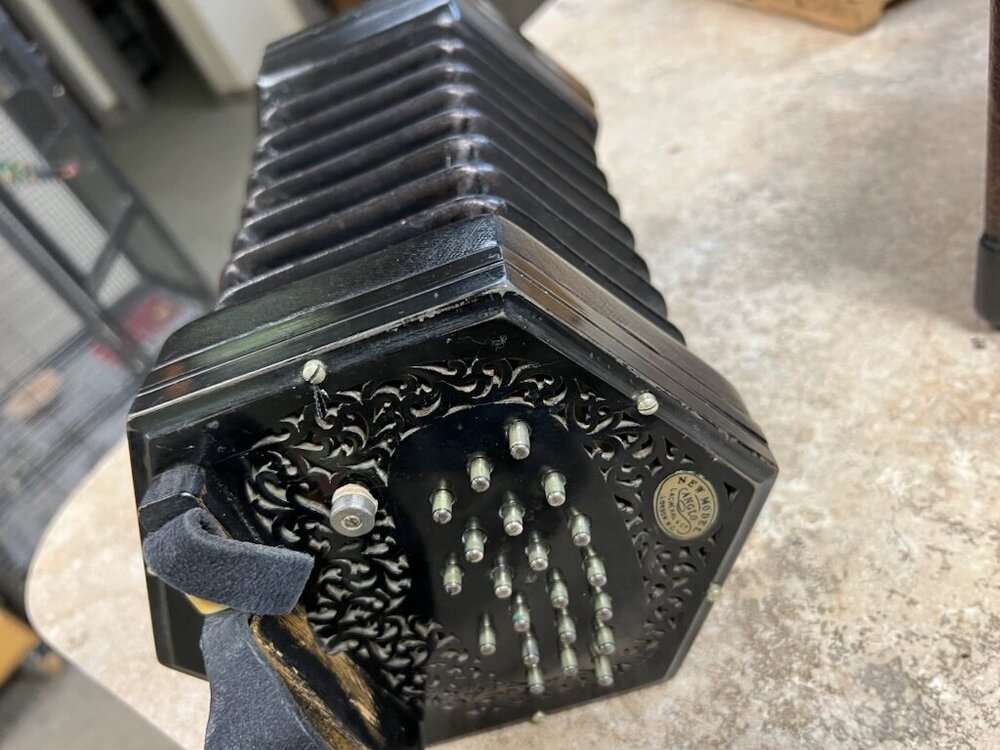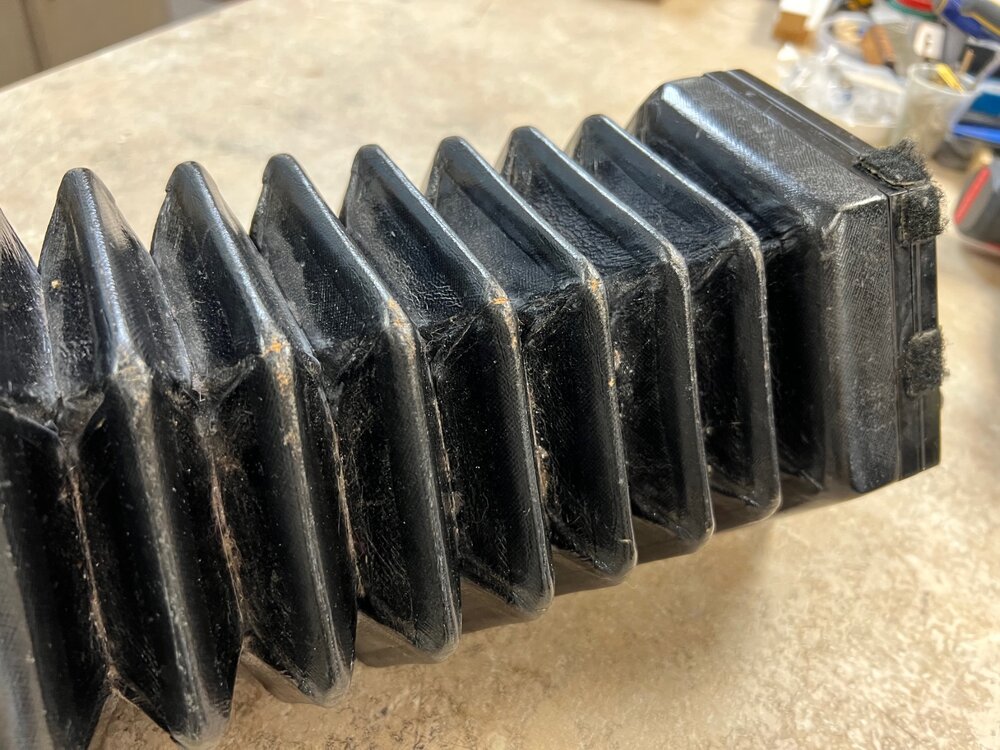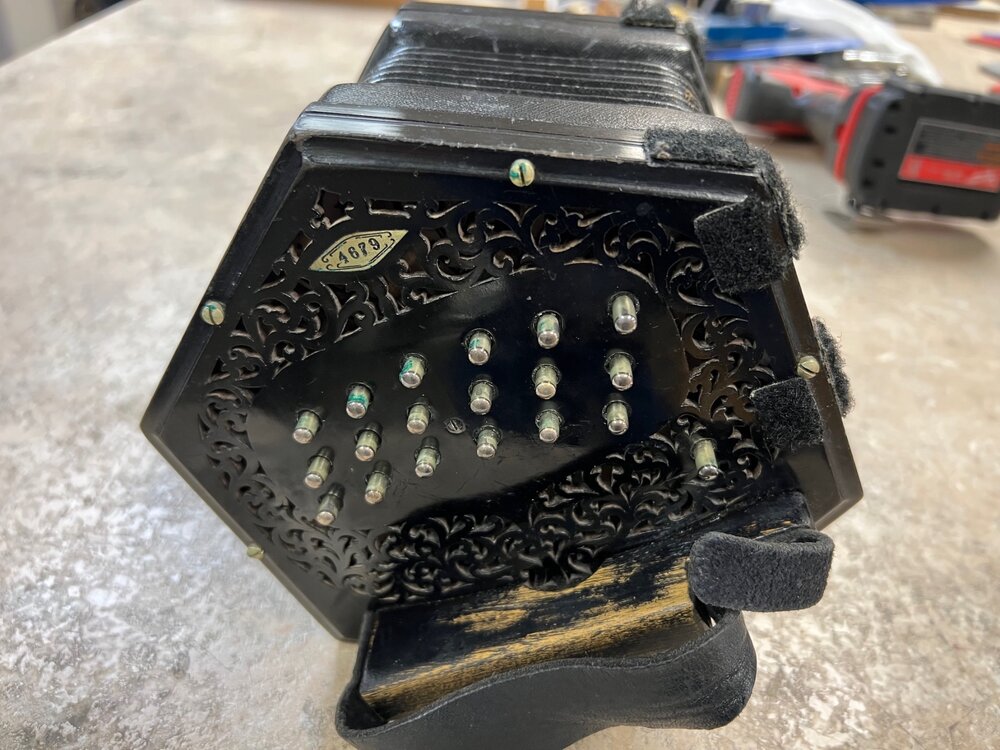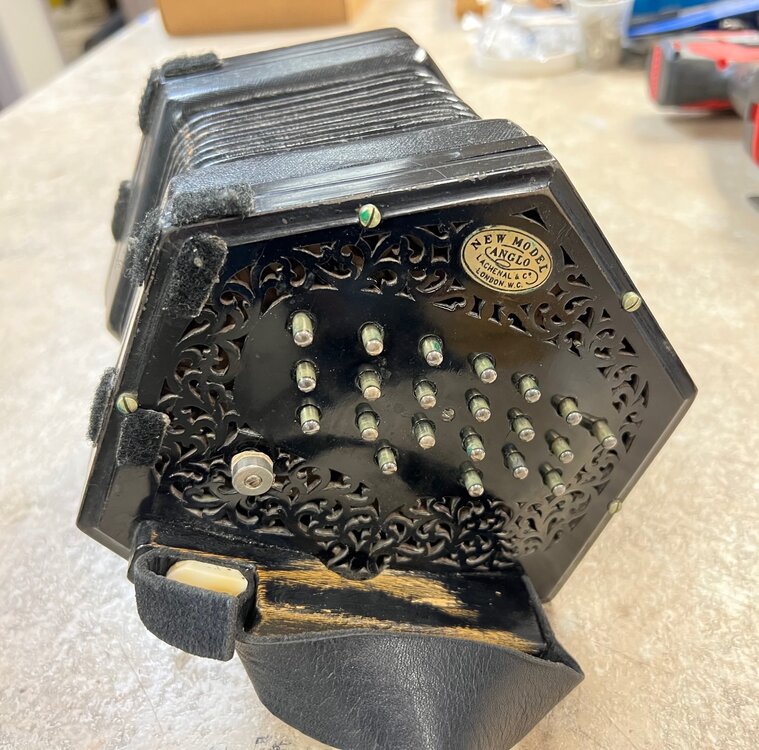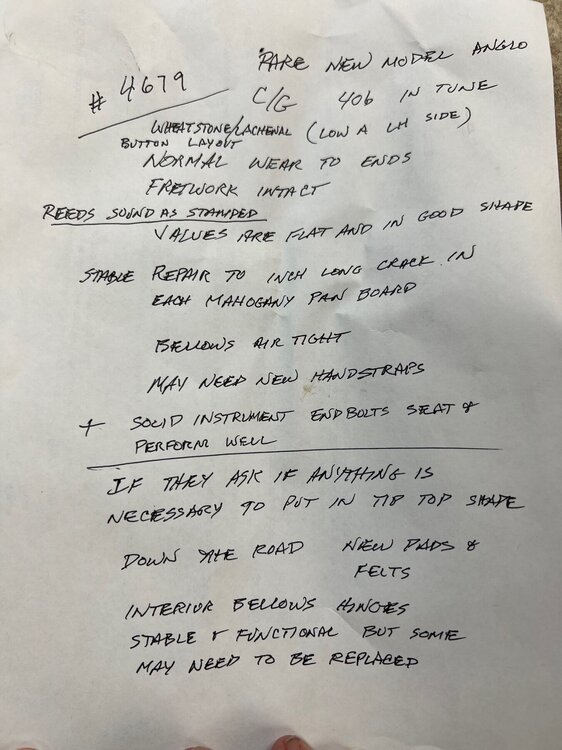
Wally Carroll
Members-
Posts
138 -
Joined
-
Last visited
Everything posted by Wally Carroll
-
Sorry Jake I forgot to measure. I will check on Monday but I think it is 6 1/4.
-
Now $4600. PM if interested. All of the proceeds of this sale are going to support the current owner who is being moved to a nursing home. This instrument belonged to his wife who died a few years ago. It comes with a Stagi case and also what I believe to be the original case.
-
-
Your first layout is the basic Jeffries layout and of the three, it is the one I would choose for Irish music. However, because I don’t use d# all that much I would change right hand side top row first button on left to a c# both directions. Noel experiments with a bunch of different layouts. What he recommends for students is the right side as I have described and the left side with a low A in place of the low F on the first button top row and a D (same as middle button pull note on left) on the first button on G row on the pull.
-
Our small instrument is best suited for small to medium hands. It is what I play. Our Noel Hill model is just a little larger in terms of spacing and can fit most hand sizes. Our standard model can be ordered with an adjustable, sliding handbar which can pretty much fit all sizes. Another option for larger hands is to go with a taller handbar.
-
Breaking 'in' a new Concertina.
Wally Carroll replied to Notemaker's topic in General Concertina Discussion
Certainly you can tell two instruments apart when you have them next to each other - I agree. The problem, as I see it, is that you no longer have the older version of your instrument to compare it to the current version. I don’t trust memory in this regard. Again, I’m not saying that an instrument can’t improve, I just haven’t been convinced that this does happen. In fact, isn’t it just as likely that it will get worse? Why would only the pleasing aspects of the sound get emphasized the more it gets played? -
Breaking 'in' a new Concertina.
Wally Carroll replied to Notemaker's topic in General Concertina Discussion
Maybe your guitar improved or maybe your expectations were lowered after the initial listen and on a second listen it didn’t sound as bad as you remembered it. I have had many experiences where I had an initial opinion about the tone of an instrument that was quite different on a later hearing. Some improved -some were disappointing. Many of these occurred over the years at Noel Hill’s workshops where the same instruments would return each year. I’ve done a bit of sound engineering as well and often I can mix for hours thinking I’ve finally got the sound perfect only to hear it the next morning and be hugely disappointed. It’s probably a mix of fatigue and adjusting to the sounds so that it starts to sound correct. My point is that it’s very difficult to say with any degree of certitude that an instrument (apart from how it is played) has tonally improved over time. But I suppose, If you believe it has, there’s no harm in that. From my perspective though, I don’t feel like I can tell people this is something that definitely happens, because I just don’t know. -
Breaking 'in' a new Concertina.
Wally Carroll replied to Notemaker's topic in General Concertina Discussion
There is a belief among some luthiers and aficionados that the wood in an instrument changes (in a favorable manner) as a result of the sound waves impacting the instrument. Some new guitar owners even put their guitars on stands next to speakers playing loud music to break them in quicker. Personally I wonder if much of the improvement is the owner getting used to the sound of the instrument, and as Anglo-Irishman has pointed out, adjusting to its specifics/quirks in a way that makes it play easier and more consistently as well. I don’t believe it’s possible to remember exactly how an instrument sounded in the past. Recordings over time would almost never be able to recreate an exact A/B comparison as well. Our hearing ability changes as well over time, especially with a lot of concertina in your head. Maybe we’re all just slowly losing the ability to hear the harsher aspects of an instrument’s tone. Regardless, from a maker’s perspective, it’s a brilliant way to deflect a buyer’s disappointments to an imagined future where all will eventually be made right 😀 -
There is a collar on the air button that the previous owner installed to make a thicker button. I was planning on removing it. I’m doing this as a favor to the current owner and am not making any commission on it so I haven’t put much work into it. The Velcro and bellows however were bothering me so I got involved. It really is a great instrument and I may end up buying it myself at some point. I don’t normally work on instruments that haven’t come from my shop but I would make an exception for this one if the buyer wants to separately commission me for this work. The instrument already is in very good playing condition. I’ll try to get photos of the inside posted in a day or so. Regarding shipping to UK, lately, to ship fully insured, the cost is around $400.
-
Hi Don the only thing I’ll add is that, unfortunately, the most affordable instruments are very difficult to play and can be very uncomfortable/frustrating for a new player. These are generally bulky and have slower reed responses which means you have to work much harder physically to play them. At around $2000 you can find decent, mid level instruments that are much easier to play and have a better sound. It’s a tough call as to whether or not to spend this much up front without knowing how you will even take to the instrument. Just know that if you do go with one of the cheaper models, some of your frustration (we all get frustrated in the beginning) might be because of the instrument itself. I lasted about three months on a $600 instrument (Stagi brand) before I upgraded to a $2500 mid level instrument.
-
Breaking 'in' a new Concertina.
Wally Carroll replied to Notemaker's topic in General Concertina Discussion
I wouldn’t worry about any break in procedures. Our instruments are played pretty heavily before shipping and I can’t think of anything that you shouldn’t do when you first get it that would be ok to do later. More important is setting good habits up front such as returning the instrument to its case after using, not resting the middle of the bellows on the knees, and keeping the room where it is stored around 50% humidity. Not playing in cold weather or allowing the instrument to get cold is best. If it does get cold, letting it warm up before playing would be a good idea. Also, don’t put any leather conditioners on the bellows. -
Spent about an hour cleaning it up. I removed the Velcro and cleaned up/recolored the bellows. Current price $5000
-
I wouldn't enlarge the air hole. This is being caused by a leak into the chamber that is associated with the note that is improperly sounding. It is either coming from a leak in the gasket or from the pad that keeps this note from sounding. If you push hard on the instrument without the air button also being pressed and it doesn't sound, then we can likely rule out that the problem is a pad that is not fully covering the hole or one that doesn't have enough spring pressure to keep it down. This leads to two other likely causes, both of which have already been mentioned: 1) air is leaking through the pad hole because it is being somehow lifted or interfered with by an adjacent pad that is being lifted (could either be coming from the air button's pad or the pad associated with the note you are trying to play along with the air button). 2) air is leaking either over the wall that separates this note's chamber from adjacent chambers, or it is leaking around the side of the chamber walls where they make contact with the bellows chamois. In my experience, leaking around the walls is more common and occurs when humidity drops and the reed pans shrink a little (such as around this time of year). If the problem is a leaky gasket, you can rough it up with you fingernail, or try pealing it up and putting shims underneath it to build it up some. You could possibly get by with a few pieces of masking tape underneath the chamois if the leak is in the bellows chamois.
-
Now $5200.00
-
The seller wants me to conduct this as a falling auction, so I will periodically lower the price until someone is interested. Right now the price is $5500.00 plus shipping. PM if interested. Thanks!
-
These scratches were probably done by a person who tunes accordions. Concertinas are typically tuned with a file laid flat on the tongue with a shim support underneath and a more typical pattern would be to go on a 45 degree angle to the tongue and then even out by filing 90 degrees from the first angle. This will produce filing marks that look like X’s going across the tongue.
-
Bellows Papers...aesthetic only?
Wally Carroll replied to Caroline's topic in General Concertina Discussion
They are just decorative. They do protect the card stock underneath but you can use leather or synthetic leather for this purpose in place of papers. -
I would agree with this. Of course, most concertina owners aren’t going to have a local repair person that they can go to in such an event. Fortunately, most things that can go wrong can be corrected by the owner with a little instruction and the necessary parts. Because of all the moving parts and tight tolerances, every concertina will eventually experience some kind of an issue, and so I would suggest that a potential owner who is not willing to open the instrument and make this type of guided repair should strongly consider playing a different instrument. I include a repair kit with my instruments and have created several repair videos that address the issues I feel comfortable having my buyers perform.
-
Thanks Wes. I believe this instrument was originally in Bflat/F but is now in C/G. It does play very much like my Wheatstone Linota from 1914. This is certainly not a typical Lachenal Anglo. The reeds are much more responsive and the woodwork is of a much higher quality.
-
Pivot pin fallen out
Wally Carroll replied to jonnymickey's topic in Instrument Construction & Repair
If you use a flexible pva glue like Elmer’s white glue, you will be fine. We put a similar product in all of our lever holes prior to assembly and can still remove them if need be. -
As a maker this a tough issue because shipping is so very expensive if the instrument is going to be fully insured (for me this is $75 within the States and $400 overseas!) but it is not something that is required as the buyer is free to pick it up in person. From my perspective, I am producing the instrument and the buyer is asking me to ship it to them for their convenience (so that they don’t have to make the trip). I’m happy to fix any issues, but I can’t pay for shipping because that has not been priced in. Similarly, I wouldn’t expect a local business to pay a courier to come to my house to pick up a defective item that I purchased from their shop. I would assume that the Concertina Connection is operating under a similar premise.
-
I’m posting this instrument for sale on behalf of a friend. This is a rare New Model Lachenal Anglo. I am no concertina historian and don’t know the history of the New Model but it plays and sounds very much like a vintage Wheatstone. The seller is asking $6000. You can deal with me directly if interested. I’m including a note that was found in the instrument’s case that discusses the condition of the instrument.
-
Anglo - what to actually rest the palm against
Wally Carroll replied to LR71's topic in General Concertina Discussion
Not that you can’t do it some other way, but I believe most of the top Irish players have the straps snug with the palms positioned in the manner you are now employing. Noel Hill specifically teaches to do this along with anchoring the left side of the instrument on the left knee. He describes the right arm as the bowing arm (as if you were playing a fiddle). You might also notice that a lot of the really good players (particularly the younger ones) seem to have very little bellows movement (both up and down as well as in and out).

